Montana is a state that prides itself on its natural beauty and abundance of wildlife. For this reason, it has proudly designated the blackspotted cutthroat trout as its Official State Fish.
But it might make you wonder: For a state like Montana that has 95 species of fish, what makes the blackspotted cutthroat trout stand out? Well, my fellow nature enthusiasts, you’re in for a treat!
Because in this article, we will talk about the blackspotted cutthroat trout, its breeding habits, natural habitats, threats, and some fun facts that you wouldn’t want to miss.
This article is for all of you who share a fascination for wildlife and yearn to understand a state fish beyond its mere symbolism.
- Related article: Montana’s Symbolic Representations
So whether you are new to Montana and learning more about it, planning a travel to the Big Sky State, or simply curious about this fish, we have all the answers for you.
Montana State Fish Origins

The idea for a Montanan state fish began when Norma Ashby and her husband, Shirley, of Great Falls were discussing state symbols.
Both ardent fly fishermen, they wondered why there was no designated state fish for Montana yet.
Together with the Montana Fish and Game Department, and Nels Thoreson, the Department’s District 4 Coordinator, Ashby launched a statewide campaign for a state fish on the “Today in Montana” show.
There were two threatened fish species candidates presented for the honor: the blackspotted cutthroat trout and the Montana grayling. However, other nominations were also accepted.
Six criteria for Montana’s state fish:
- Native fish to Montana
- Not already adopted by another state
- Well accepted by people
- A game fish
- Distinctive in appearance
- In more than one area of the state
In the end, the blackspotted cutthroat trout received 520 votes which easily outdistanced the Montana Grayling’s 200 votes.
Art Whitney, chief of the state’s Fisheries Division, was also instrumental in raising awareness of the blackspotted cutthroat trout’s importance to the state’s ecosystem.
The blackspotted cutthroat trout was officially acknowledged as the state fish of Montana when Governor Thomas Judge signed the law on February 10, 1977.
Truly, this beautiful fish is a symbol of pride for the people of Montana.
Its status as the official state fish showcases the importance placed on the preservation of Montana’s way of life by protecting its native wildlife.
What Is a Blackspotted Cutthroat Trout?
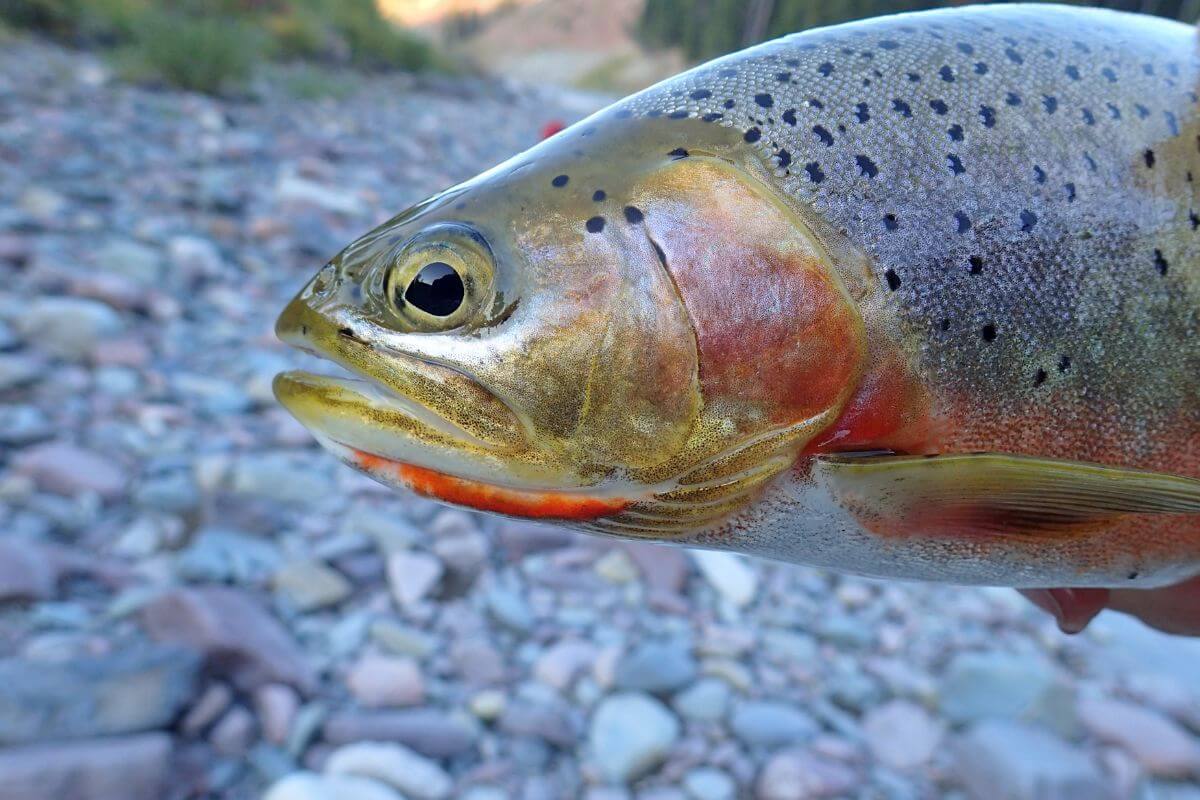
Montana’s state fish, the blackspotted cutthroat trout (Oncorhynchus clarki) is an indigenous species that is found across Montana’s rivers and quality trout streams.
It has a distinct appearance characterized by a red-colored slash that runs from the head to the tail with a green body.
This fish species resembles the mountain or speckled trout in form and fin position, but their specks are of a deep black instead of red or gold.
Speaking of colors, did you know that the colors red and green are also colors representing Montana? Green signifies the vibrancy of the wilderness and red signifies the valor and courage.
This trout thrives in cold waters and is found in rivers and streams throughout Montana’s wild trout waters. A full-grown cutthroat trout can measure up to 16 inches in length.
This singular state fish is divided into two subspecies: the Westslope Cutthroat Trout and the Yellowstone Cutthroat Trout.
Montana’s blue-ribbon trout streams attract renowned trout anglers from around the world. These visitors, along with residents, appreciate the beauty and value of the blackspotted cutthroat trout along with its role in Montana’s wildlife and cultural heritage.
Blackspotted Cutthroat Trout Breeding Habits
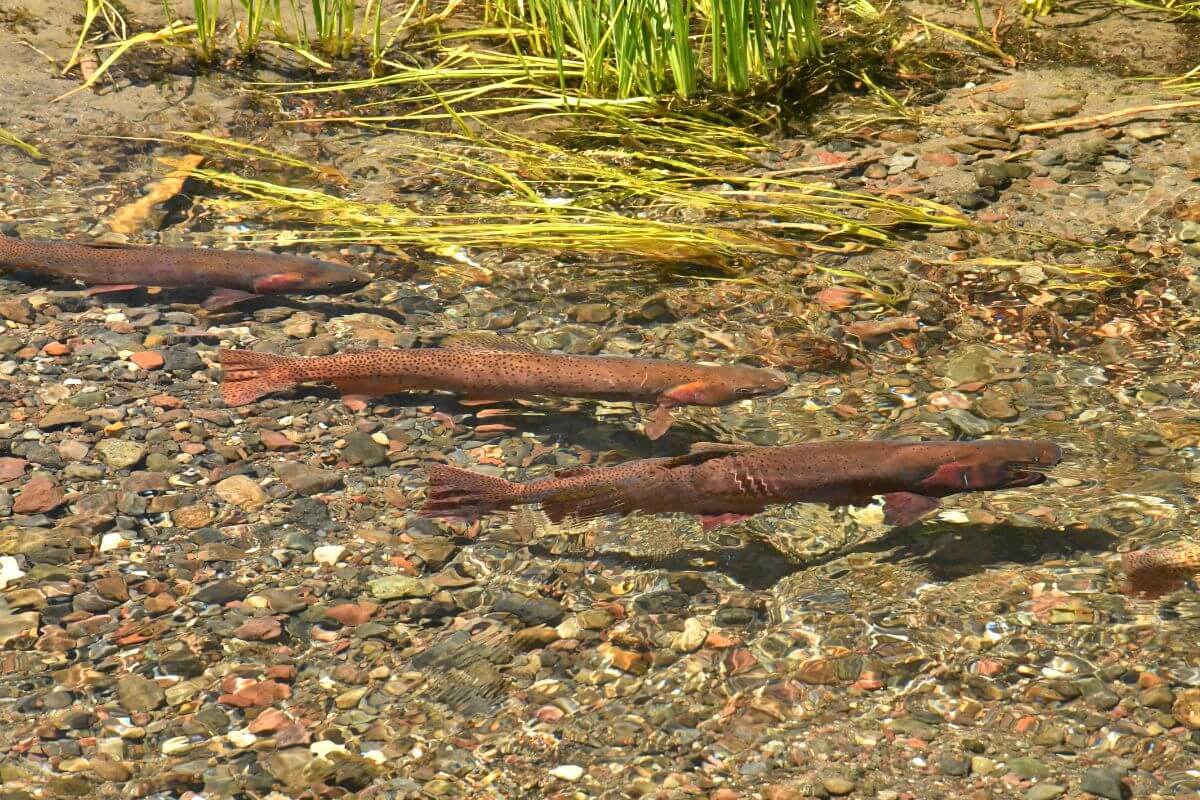
The blackspotted cutthroat trout is known for its unique breeding habits, which occur in running water.
During the breeding season, the red color on the side of the head and gill of the male becomes more intense in color.
The females lay their eggs in gravel nests called “redd” within the running water of native streams usually during spring. These eggs’ incubation period lasts several weeks until a newborn fry emerges.
After hatching, the fry stays on the native stream for about 2 years until they migrate back to lakes for rearing.
Where Do Blackspotted Cutthroat Trout Live?
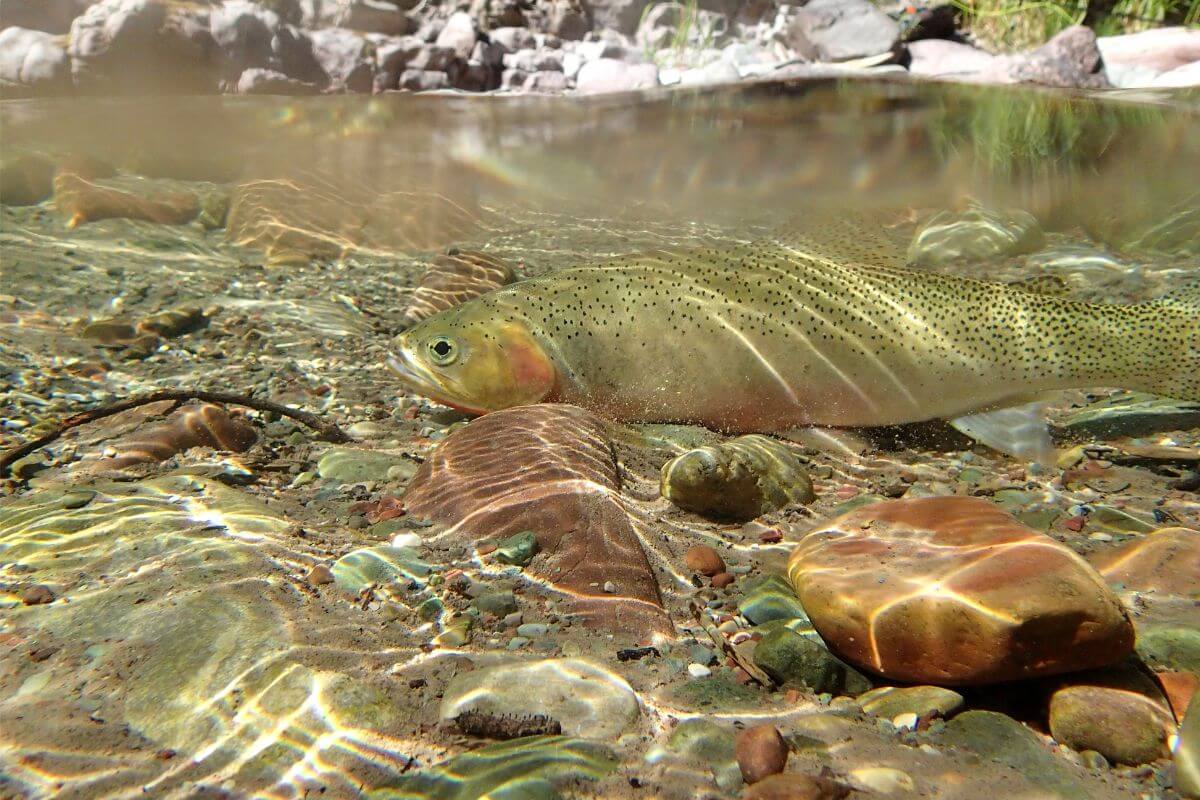
Cutthroat trout are a species of trout that can be found in various regions of North America.
The Yellowstone Cutthroat Trout inhabits relatively clear, cold streams, rivers, and lakes. Optimal temperatures have been reported to be from 4 to 15 degrees C., with occupied waters ranging from 0 to 27 degrees C.
Historically, Yellowstone cutthroat trout have occupied much of the Yellowstone River basin, including portions of the Clarks Fork of the Yellowstone River, Bighorn River, and Tongue River basins in Montana and Wyoming.
This species has been introduced to many watersheds in Montana where they were not native since.
The Westslope cutthroat trout are commonly found in the Kootenai watershed, the Clark Fork watershed, and the headwaters of the Missouri and Saskatchewan Rivers.
This subspecies is also found in the Salmon River and Coeur d’Alene Basins of Idaho and Canada and has a few scattered populations in Wyoming, Washington, and Oregon.
Their movements can be influenced by water temperature, food availability, and spawning. Blackspotted cutthroat trout are known to travel long distances to feed and spawn in favorable habitats.
Montana State Fish Threats
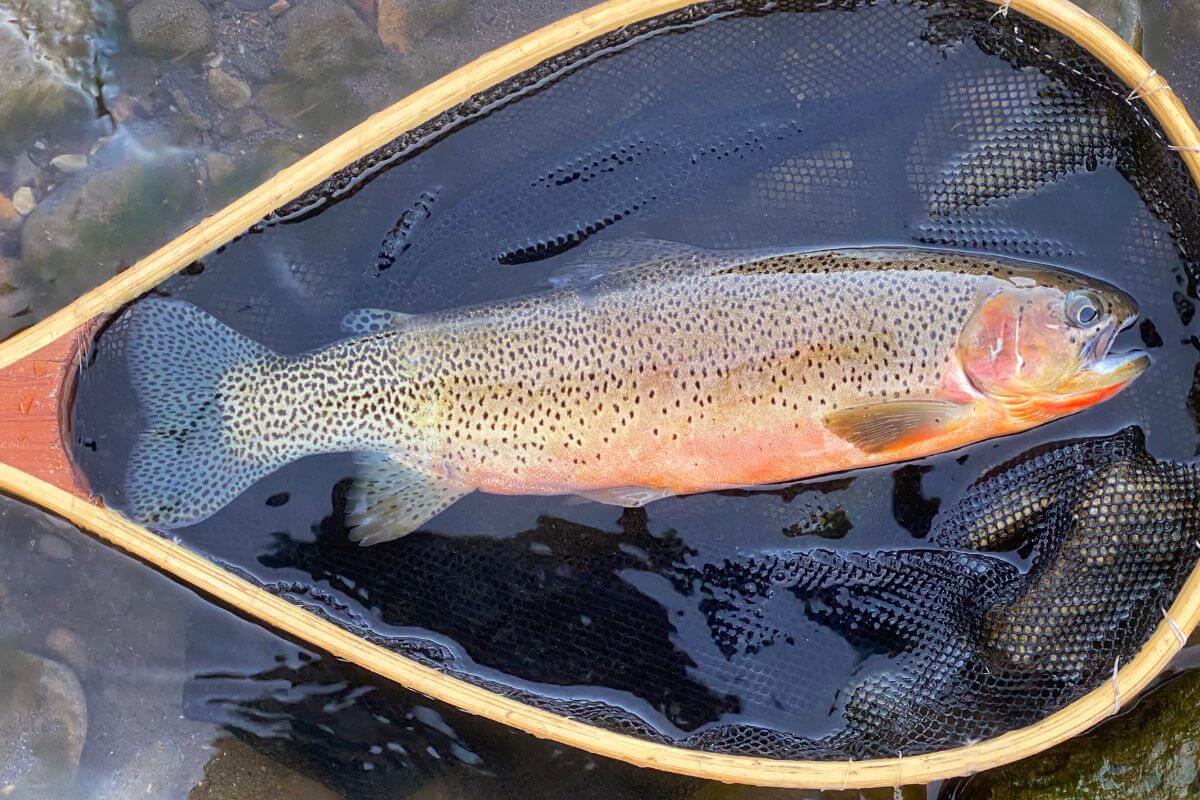
In recent years, the decline of trout populations in Montana has highlighted the importance of protecting these valuable natural resources.
Efforts to conserve and protect the blackspotted cutthroat trout and other wild trout populations are ongoing as the said fish is listed as a “Species of Concern” by the Montana Department of Fish, Wildlife and Parks.
One of the most significant threats to the blackspotted cutthroat trout is the loss of habitat due to human-induced factors such as land development.
Natural hybridization with other native trout species such as lake trout and rainbow trout also contributes to the decline in its population.
The decline of trout populations can also be attributed to the mortality of trout caused by various factors such as disease, drought, and habitat degradation.
These factors also have adverse effects on the growth, supply, and movement of trout in Montana’s waters.
Efforts to conserve and restore the blackspotted cutthroat trout include initiatives such as the restoration of blue-ribbon trout streams and the implementation of wild trout conservation programs.
For one, the efforts to manage native trout resources in Montana are specifically evident in Yellowstone National Park’s world-renowned wildlife and fish populations.
Montana State Fish Fun Facts
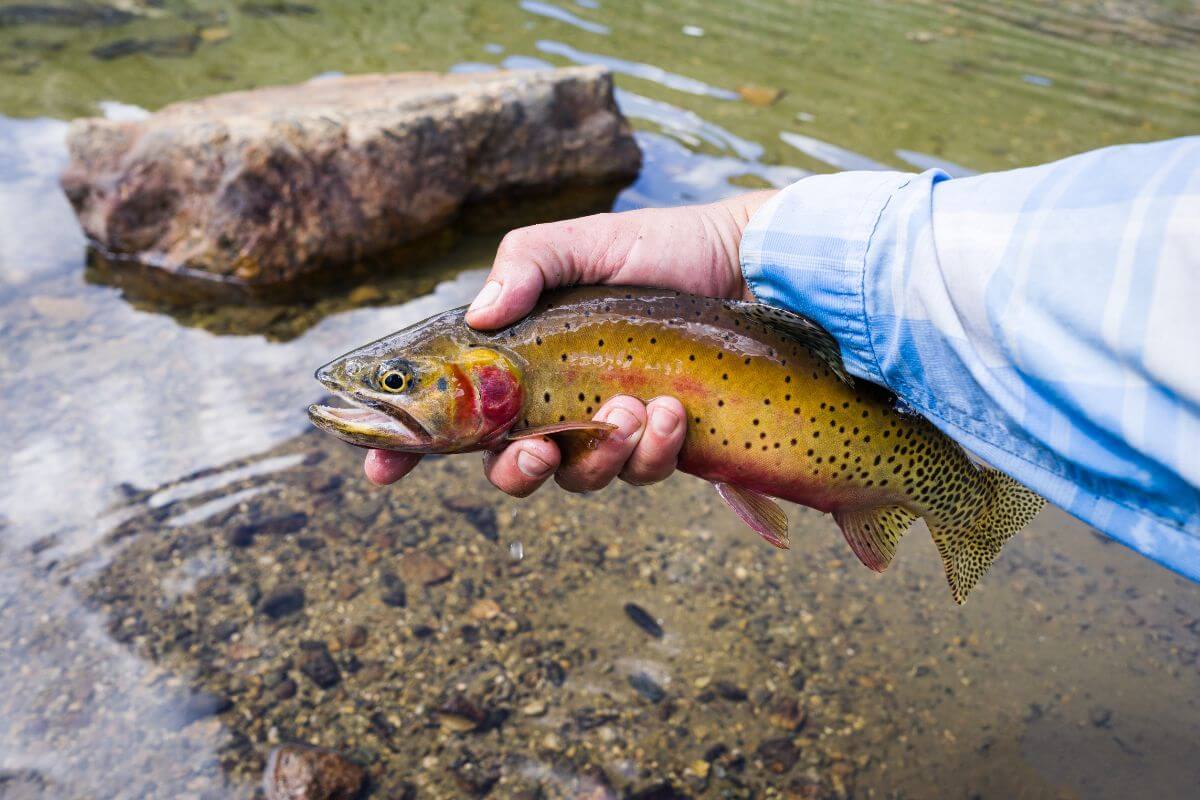
Montana is famous for being home to some of the most beautiful and renowned trout fisheries in the world. Here are some facts about the blackspotted cutthroat trout that you would not want to miss:
1. These fish are named for the red slashes near their lower jaws which make the fish look like it has a huge cut on its throat.
2. Interestingly, Cutbows are the term used for a hybrid between a cutthroat and a rainbow trout.
3. Cutthroat trout species and their subspecies are the official state fish of seven western U.S. states, including Montana.
Montana State Fish Final Thoughts
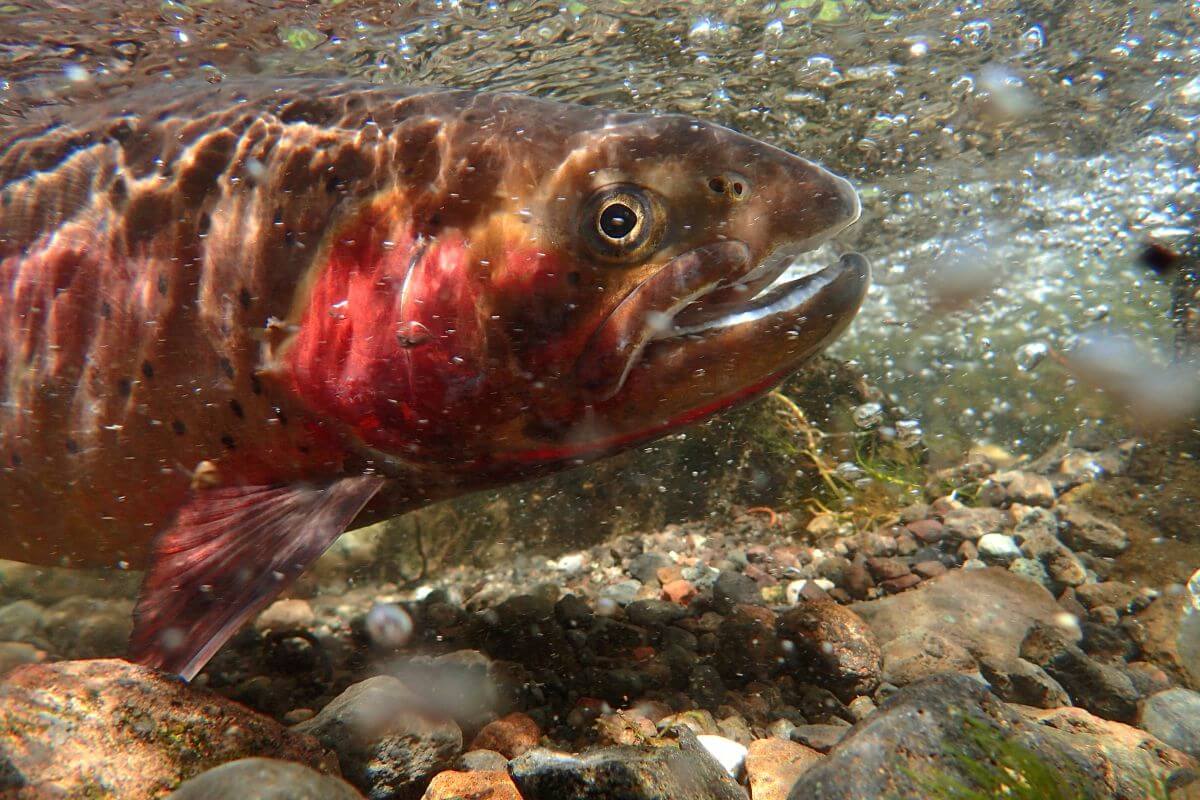
The blackspotted cutthroat trout is a majestic fish and is Montana’s official state fish. The species is considered a favorite among renowned trout anglers and conservationists alike.
They have very distinct features such as the red slashes near their lower jaws, from which they derive their “Cutthroat” title. They also love cold water environments.
Although there has been a significant decline in wild trout populations in recent years, strict natural resource programs and efforts have been put in place to preserve and enhance trout conservation in Montana.
The blackspotted cutthroat trout is an important part of Montana’s history and culture, and it is important to protect them fully.
This Montana state fish is a reflection of the state’s commitment to preserving its natural resources for the present and future generations altogether.
Montana State Fish FAQs
Montana’s reputation as a premier destination for fishing enthusiasts is well deserved, with its abundance of trout and diverse waterways. Let’s answer some common questions about Montana’s state fish.
1. Is Montana a Good Fishing State?
Famous fishing spots in Montana include the Yellowstone River, Missouri River, and Bighorn River.
Preservation efforts, combined with strict fishing regulations, have helped maintain Montana’s wild trout populations in check. Overall, yes, Montana is a great fishing state.
2. What Fish Are Popular in Montana?
Here are the top 3 popular fish species in Montana:
- Rainbow Trout – known for its vibrant colors, strong fight, and wide distribution in both game and non-game waters.
- Brown Trout – prized for its size, beauty, and ability to survive in diverse habitats.
- Cutthroat Trout – native trout species in Montana that attracts both locals and tourists for its unique characteristics and importance in Montana’s history and conservation efforts.
3. What Fishing Spots Are Famous in Montana?
Some of the best fishing spots are the town of Ennis, located near the Madison River, Yellowstone River, Gallatin River, Beaverhead River, and Bighorn River.
These areas offer some of the most scenic and productive trout waters in Montana and attract visitors from all over the world.
4. What Fish to Eat in Montana?
If you’re looking to try some of the fish commonly consumed in Montana, you might consider trying rainbow trout, lake trout, or walleye.
Rainbow trout is a delicious fish that can be cooked in a variety of ways, such as grilling or pan-frying. While Lake trout and walleye are also popular among anglers and can be prepared similarly to rainbow trout.
If you want to learn more about Montana, keep your mind engaged with these articles:

